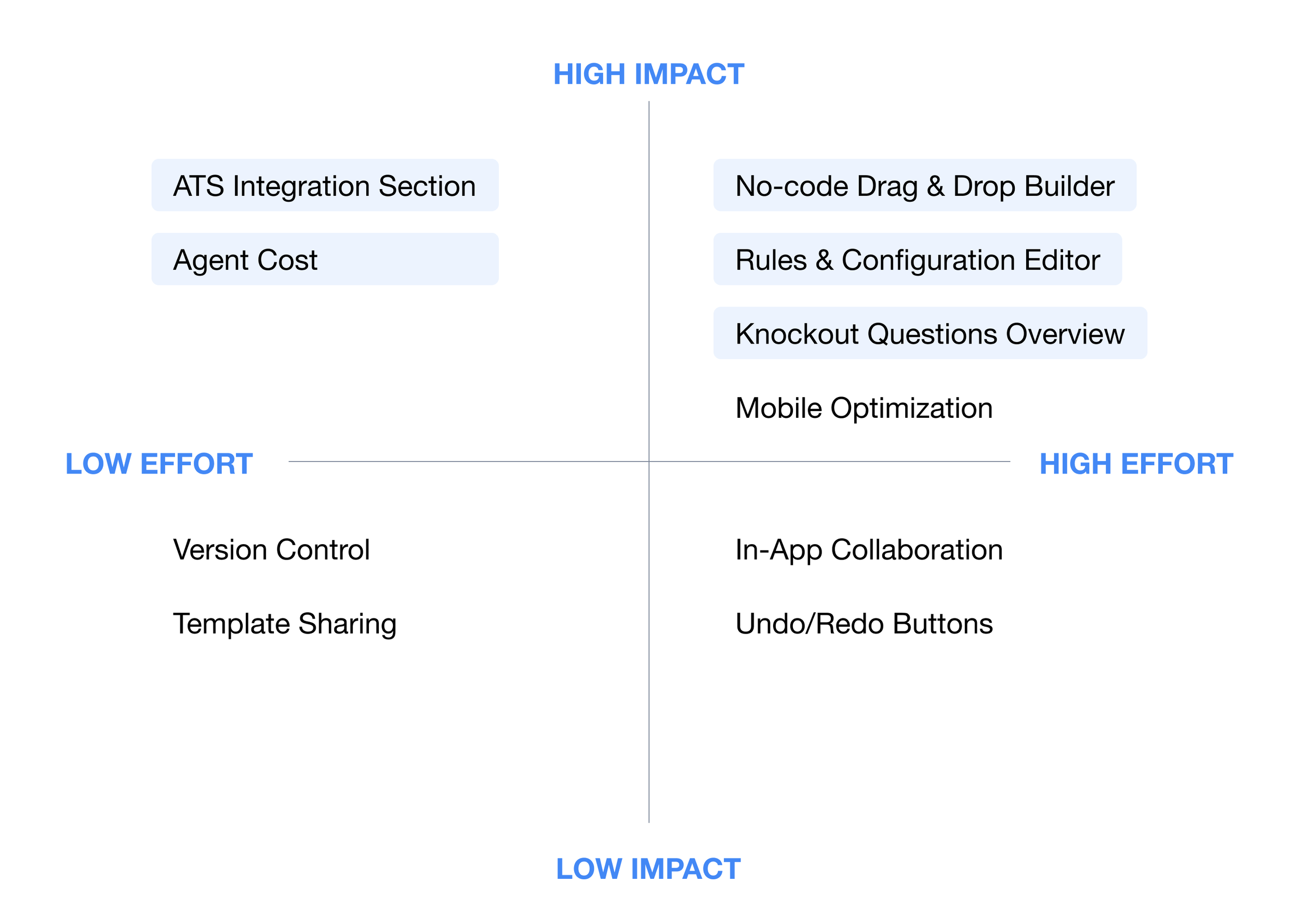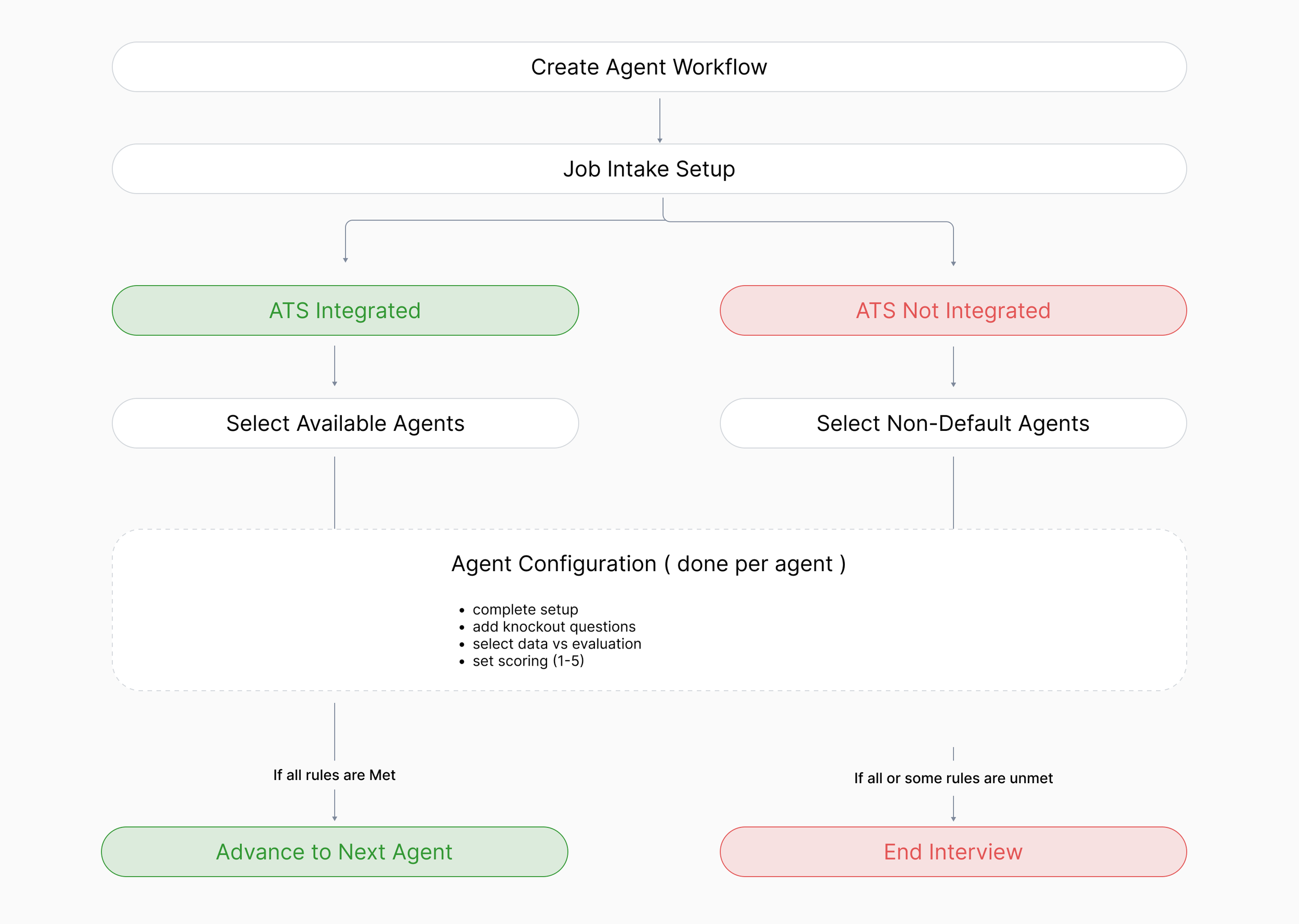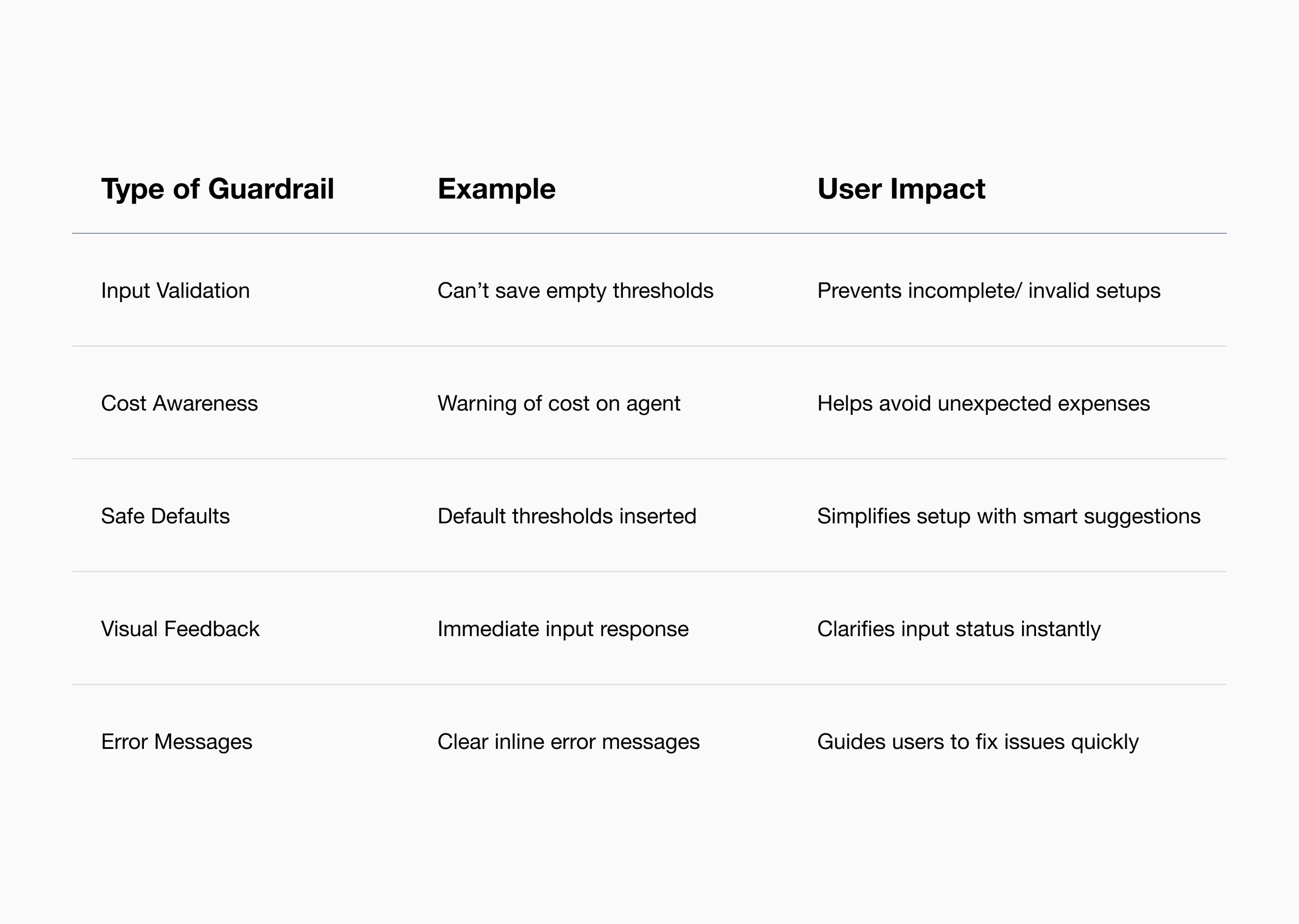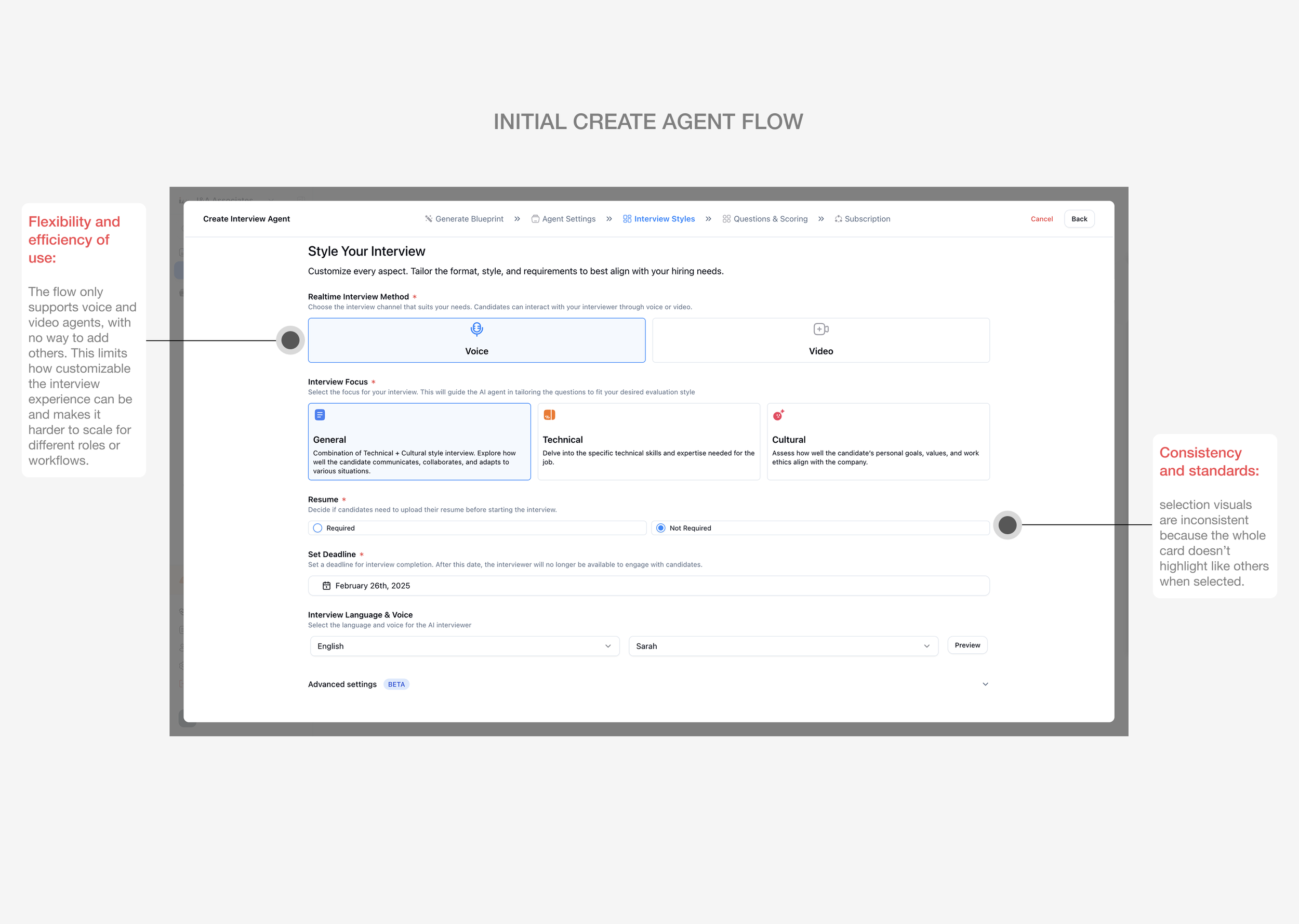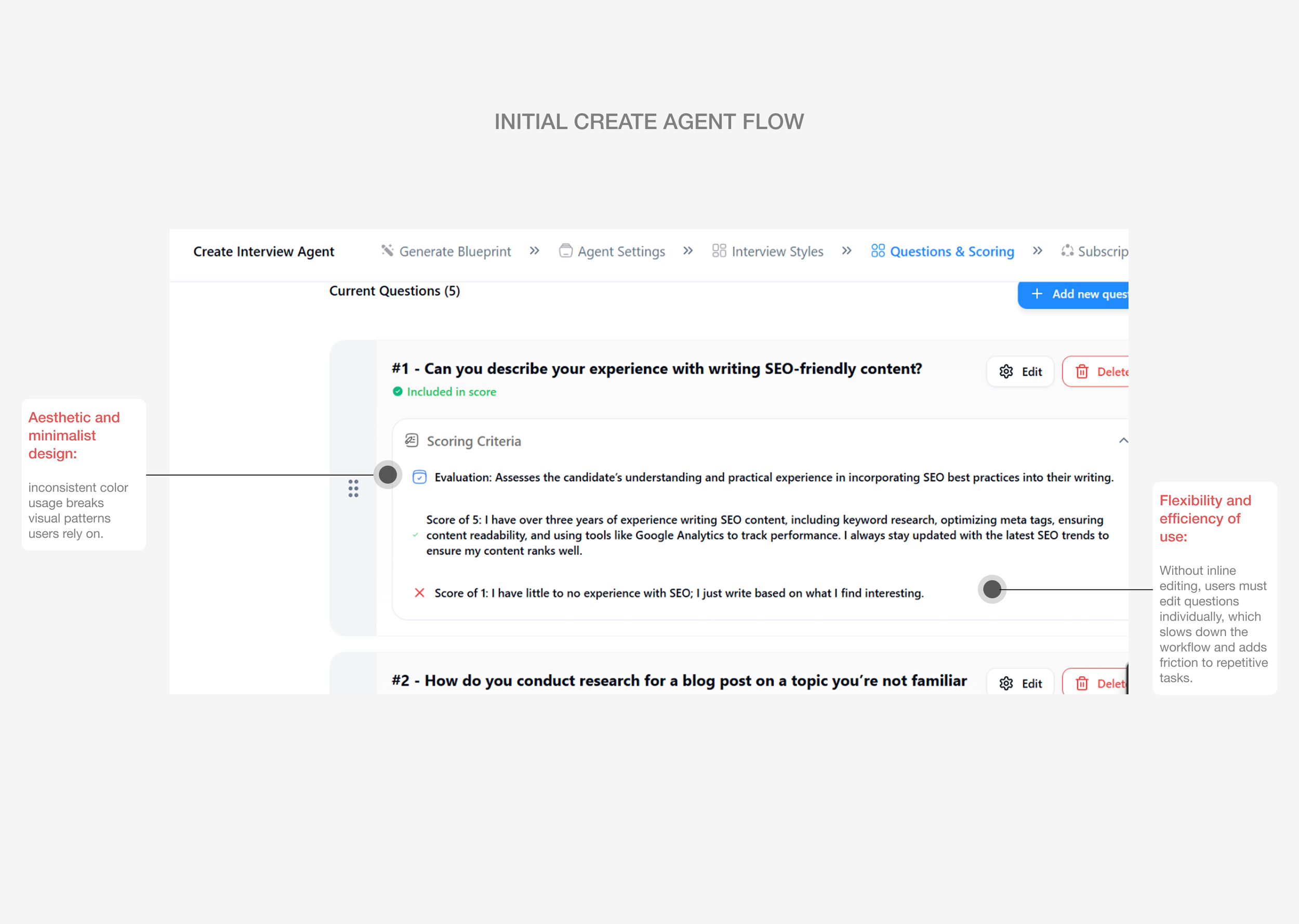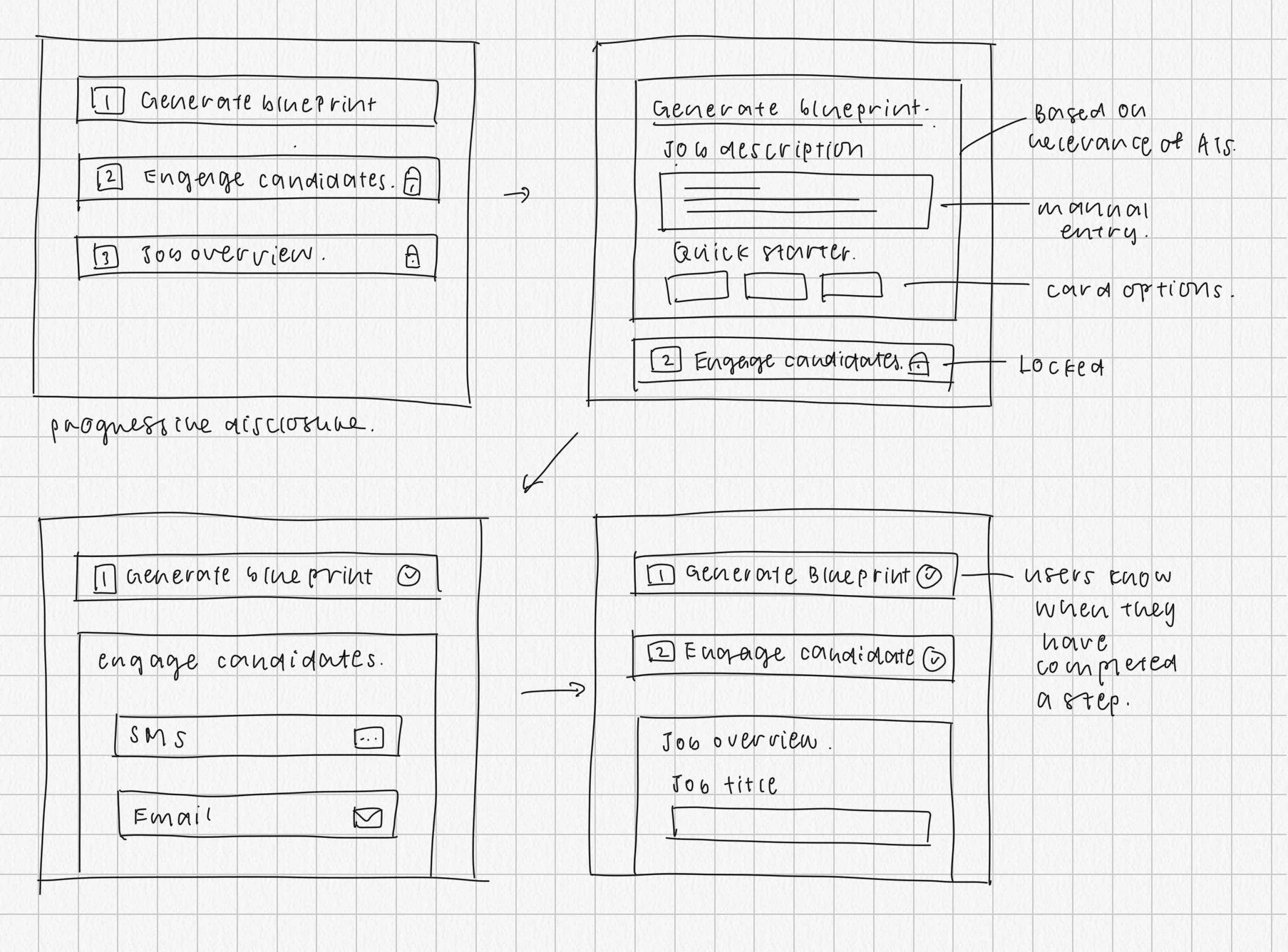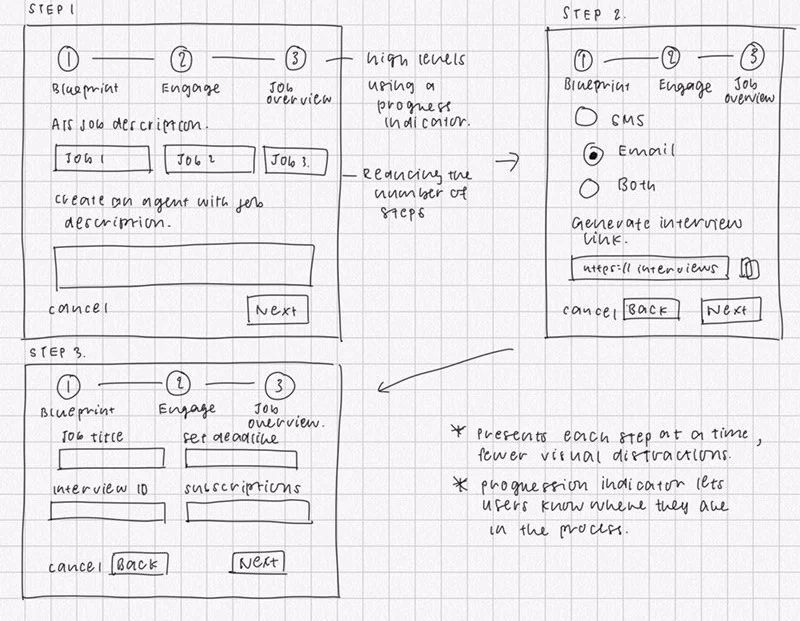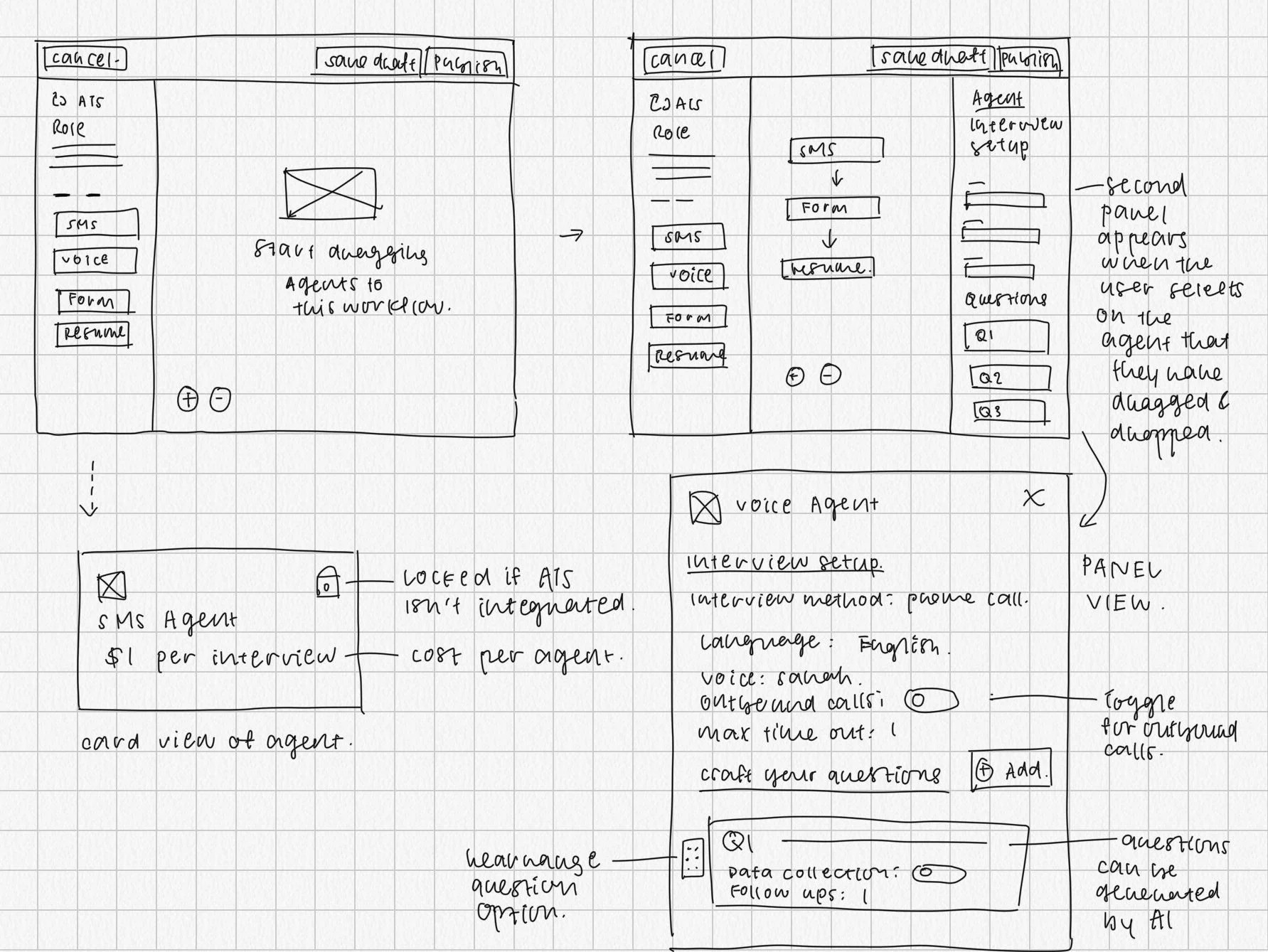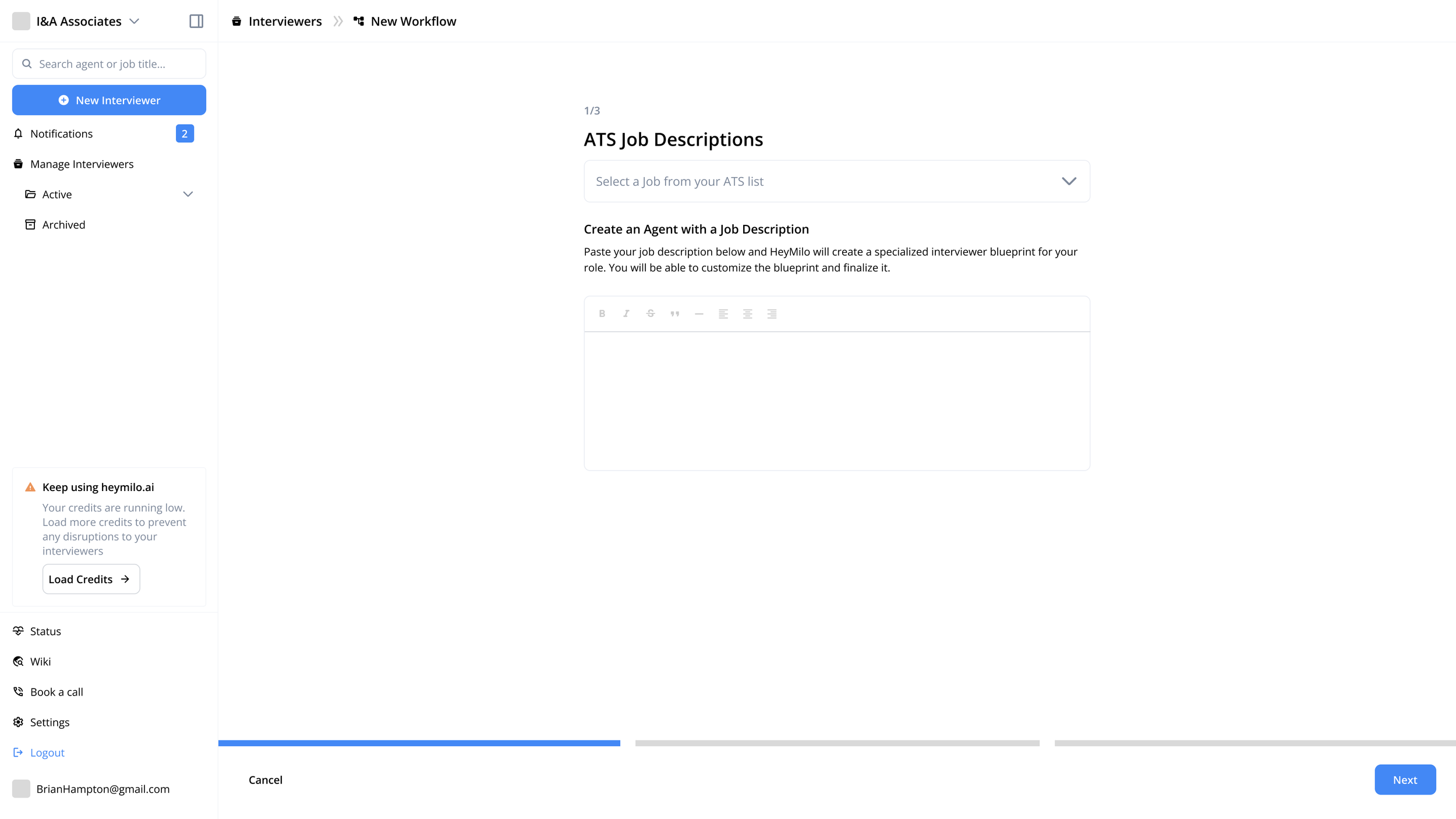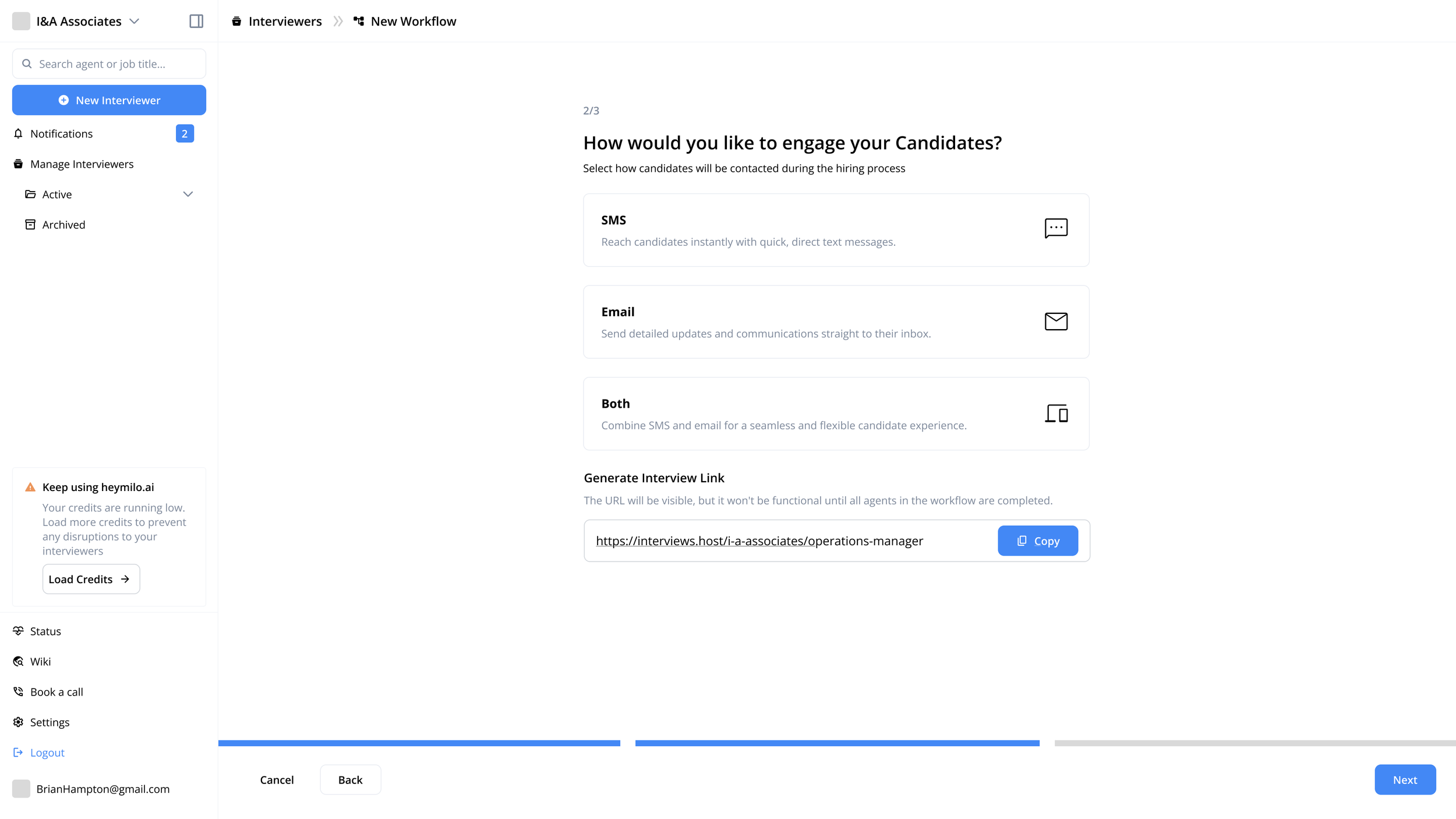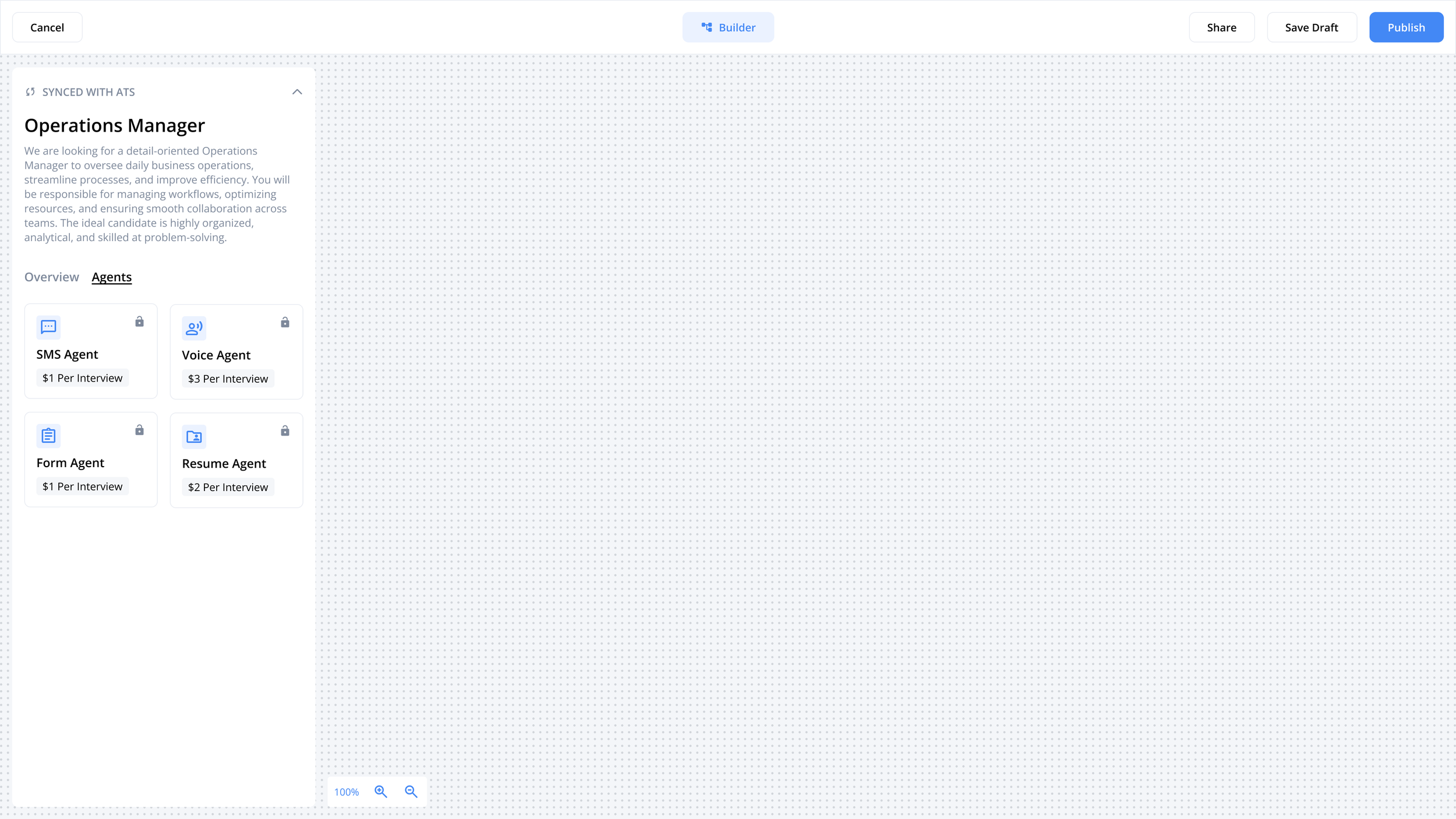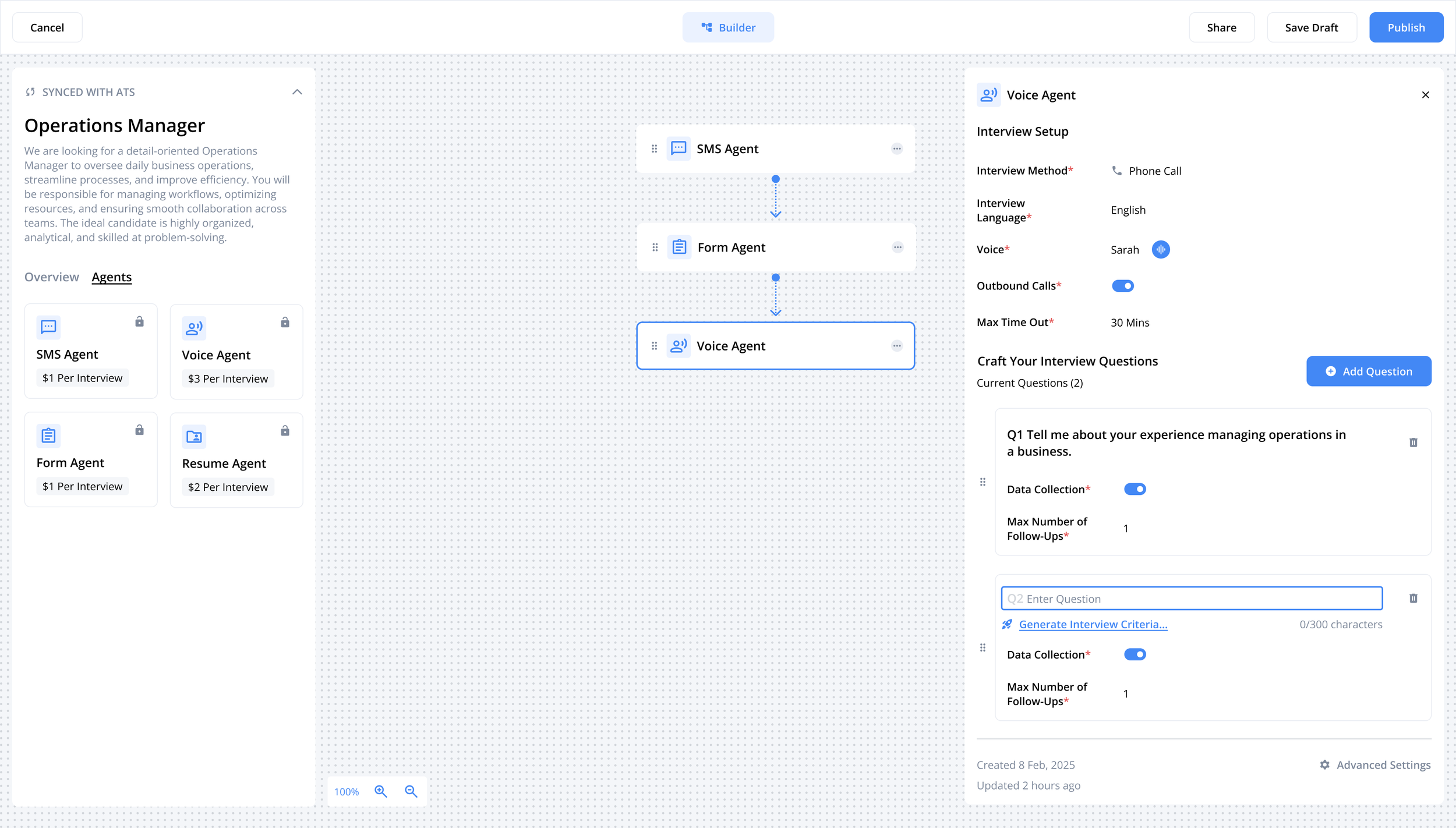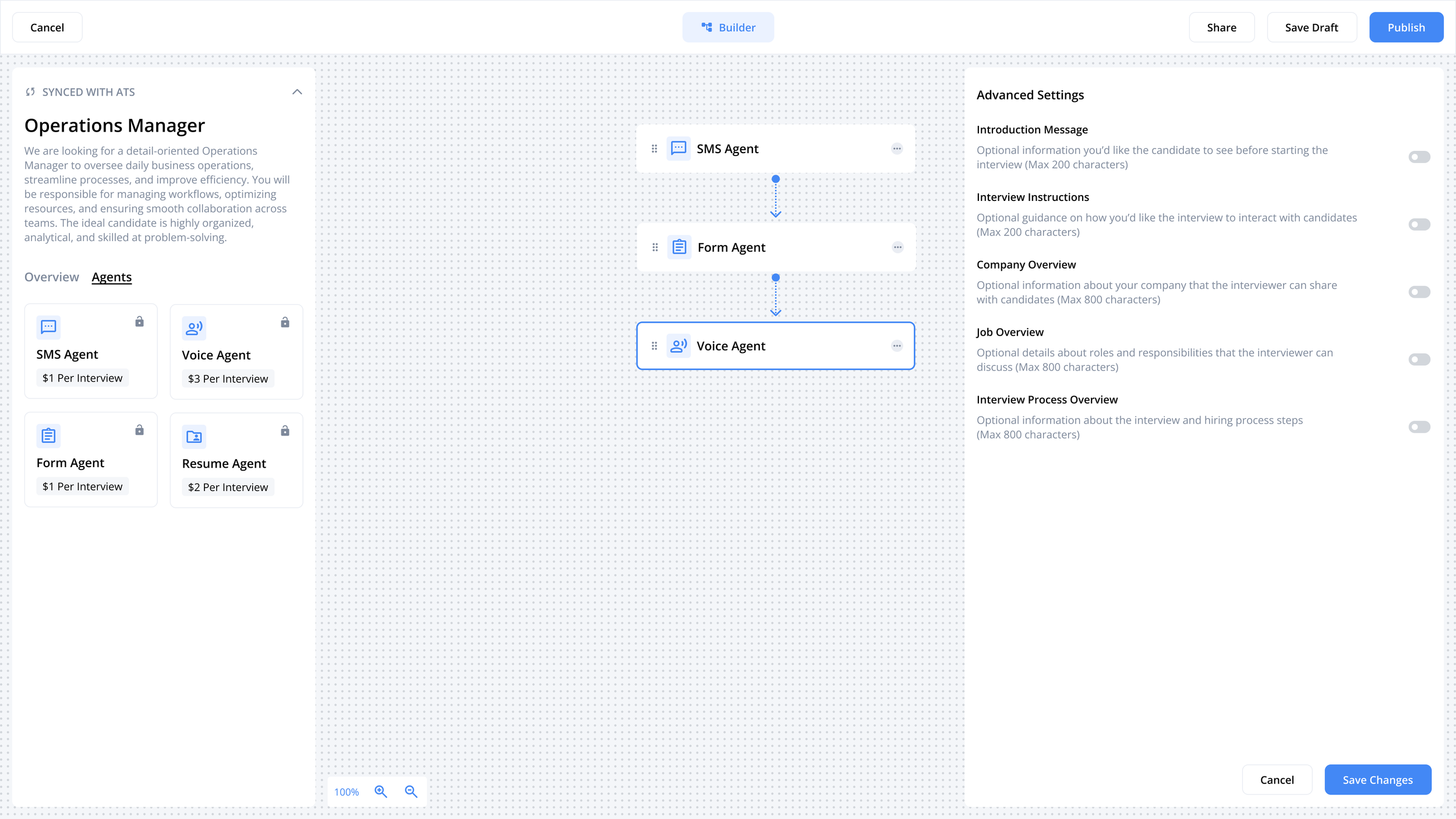Scaling HeyMilo’s Agentic Agent Builder
Reimagining recruiting workflows using agentic AI agents. Designed a modular web builder that let recruiters customize hiring steps using AI agents like SMS, forms, voice, and resume parsing.
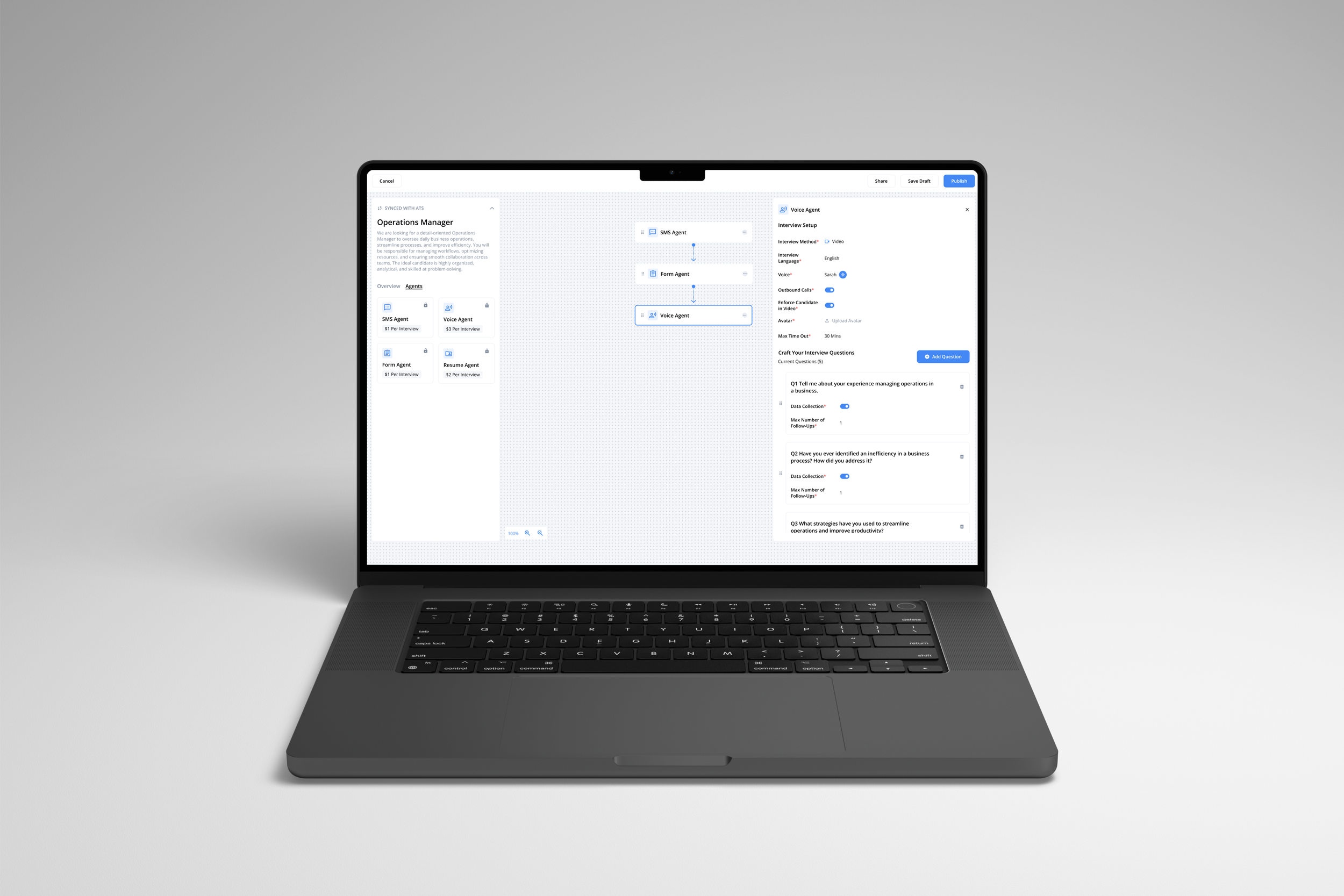
Overview
Role & Responsibilities
I designed a no-code Agentic AI Agent Builder to help recruiters automate early-stage screening. I collaborated with founders, marketing, and engineering to map workflows, design user flows and wireframes, and refine the experience based on stakeholder feedback.
Timeline
HeyMilo was exploring ways to give recruiters more control over how candidates move through hiring workflows powered by modular AI agents, like SMS screening, voice interviews, resume parsing, and forms. I was brought in to design a flexible, step-by-step builder that would allow users to customize workflows based on the needs of each role.
3 Months
Outcome
I designed a no-code Agent Builder with a step-by-step setup that helps recruiters gather key screening details faster, reducing manual follow-ups and enabling better hiring decisions. The design also supports scalable AI agent configurations for future growth.
Problem Discovery
Recruiters need an easy and affordable way to screen candidates, but relying only on voice interviews makes the process costly and doesn’t fit all hiring needs.
As HeyMilo grew, recruiters needed more flexibility and cost-effective ways to screen candidates. Voice and video interviews were expensive, and recruiters wanted to filter candidates earlier to save time and budget. Many companies preferred collecting key candidate information upfront rather than conducting full interviews, aiming to stay involved throughout the process. There was also strong demand for assessments beyond voice and video agents to better evaluate specific skills.
This revealed a clear need for a more adaptable screening solution that could fit different hiring workflows and budgets.
Why Recruiting Needs More Flexibility
The Big Picture
Recruiters are under increasing pressure to fill roles quickly, yet 91% of tech hiring managers report difficulty filling open positions, and 86% say finding technical talent is challenging. Many existing tools offer limited automation and lack the flexibility to adapt to the unique steps and signals involved in real-world hiring workflows.
With this in mind, it’s clear that recruitment processes need more adaptable and efficient approaches to keep pace with hiring demands.
Source: LinkedIn Talent Solutions, 2023; Gartner, 2023.
Stakeholder Meeting
Summary of Discussions & Key Takeaways
After several meetings with the stakeholders, I gathered key insights from customer feedback and internal discussions to identify common pain points with the voice and video agents.
Insights and Findings
Identifying Common Themes
Through stakeholder conversations with clients, I gained deeper understanding of users’ pain points and feature needs. This added context was essential in shaping how we could scale agent options more effectively to meet client demands.
FINDINGS
Clients found workflows too rigid and hard to customize
LEAST ENJOYED
Doesn’t show how that agent connected to others in the process.
LEAST ENJOYED
Voice and video agents were expensive to run
MOST ENJOYED
Appreciated having visibility into candidate progress
LEAST ENJOYED
Lack of transparency around agent costs in the modal
MOST ENJOYED
Wanted self-serve tools they could configure and reuse
Balancing User Value and Development Feasibility
Feature Prioritization
After collaborating with HeyMilo’s key stakeholders, I prioritized all the features discussed during the meeting to evaluate their impact and complexity. This allowed us to identify which features would deliver the most value in the shortest time, helping the team focus on high-impact, feasible solutions first.
The platform for the coming wave of AI agents
Design Opportunity
The Agent Builder is HeyMilo’s tool for setting up custom screening flows using agents like SMS, Form, Voice, and Resume. The agents available depend on your ATS integration, so you only see what’s relevant. Recruiters can choose the agents they need, edit the questions, and score responses from 1 to 5. Each step runs automatically, moving candidates through the process—all without juggling emails, spreadsheets, or separate tools.
💬 SMS Agent
Send quick screening questions via text so candidates can respond on their own time.
→ Follow up automatically with next steps or clarification
🎙️ Voice Agent
Conducts a natural, AI-powered phone screen to capture detailed answers.
→ Ideal for evaluating communication and soft skills early on.
📄 Form Agent
Collect structured responses through a customizable form.
→ Best for gathering info like availability, certifications, or deal-breakers.
📎 Resume Agent
Extracts key details from uploaded resumes to pre-fill candidate profiles.
→ Extracts and analyzes experience
Breakdown of how decisions guide candidate movement through workflows
Decision Flow Mapping
I created a decision flow diagram to simplify how recruiters set up agents one at a time with specific rules. This modular approach clarifies how ATS integration and AI-driven knockout criteria guide candidate progress, making the workflow easy to understand, flexible, and scalable.
Why guardrails matter in no-code platforms
Guardrails at a Glance
In no-code tools, users have a lot of freedom, which can lead to mistakes or wasted time. Guardrails help by:
Keeping complex setups simple and safe
Preventing errors and costly missteps
Guiding users toward effective workflows
Balancing support with user control
This way, users build confidently without feeling restricted.
Initial Agent Flow
Heuristic Assessment of the Initial Agent Setup Experience
I utilized heuristic evaluations to guide early design decisions, communicate my thinking to stakeholders, and proactively identify usability issues before testing. This approach reduced rework and helped keep the experience intuitive and user-focused from the start.
Early Explorations
Ideation and Brainstorming
I started by working on the setup form, where recruiters input key job details before configuring their agents. I went through various iterations and reviews to find the best way to present this flow without overwhelming users, exploring both progressive disclosure and step counter approaches. Once that foundation was in place, I shifted focus to ideating the core experience: the drag-and-drop AI Agent Builder. I mapped out how recruiters could easily add, configure, and link agents to create workflows tailored to their screening needs.
A/B Testing
Testing User Preferences for Setup Options
I conducted A/B testing to explore the most efficient way to present ATS job options for users with existing integrations. The test evaluated two key variables:
Component type: Dropdown vs. card-based selection
Information hierarchy: Showing manual entry first vs. ATS-connected jobs first
These variations helped determine which layout and flow better aligned with user expectations and supported faster task completion.
Hi-Fi Wireframes
Final solution
Introducing the new agent setup form, designed to simplify configuration, guide users step-by-step, and enable faster, more effective workflow creation.
Drag-and-Drop Agentic AI Workflow
To streamline agent setup, users can now generate questions with AI, make inline edits, select agents based on budget, and link multiple agents into cohesive workflows, all within an intuitive drag-and-drop interface.
Final Takeaways
Reflecting on challenges and growth
Prioritizing user-centric language.
Through stakeholder meetings we realized the language we used didn’t match how recruiters actually talked. Adjusting our wording helped make the experience feel more natural and easier to understand.
Not being afraid of pivoting
Embracing the willingness to pivot allowed me to respond effectively to user feedback and project needs, ultimately leading to a stronger, more user-centered design. It reinforced the importance of flexibility in the design process and showed that adapting quickly can drive better outcomes.
Continuous Validation
We recognize that every recruiter’s process is unique, so ongoing usability testing is key to truly understanding their needs and making the builder as helpful as possible.


